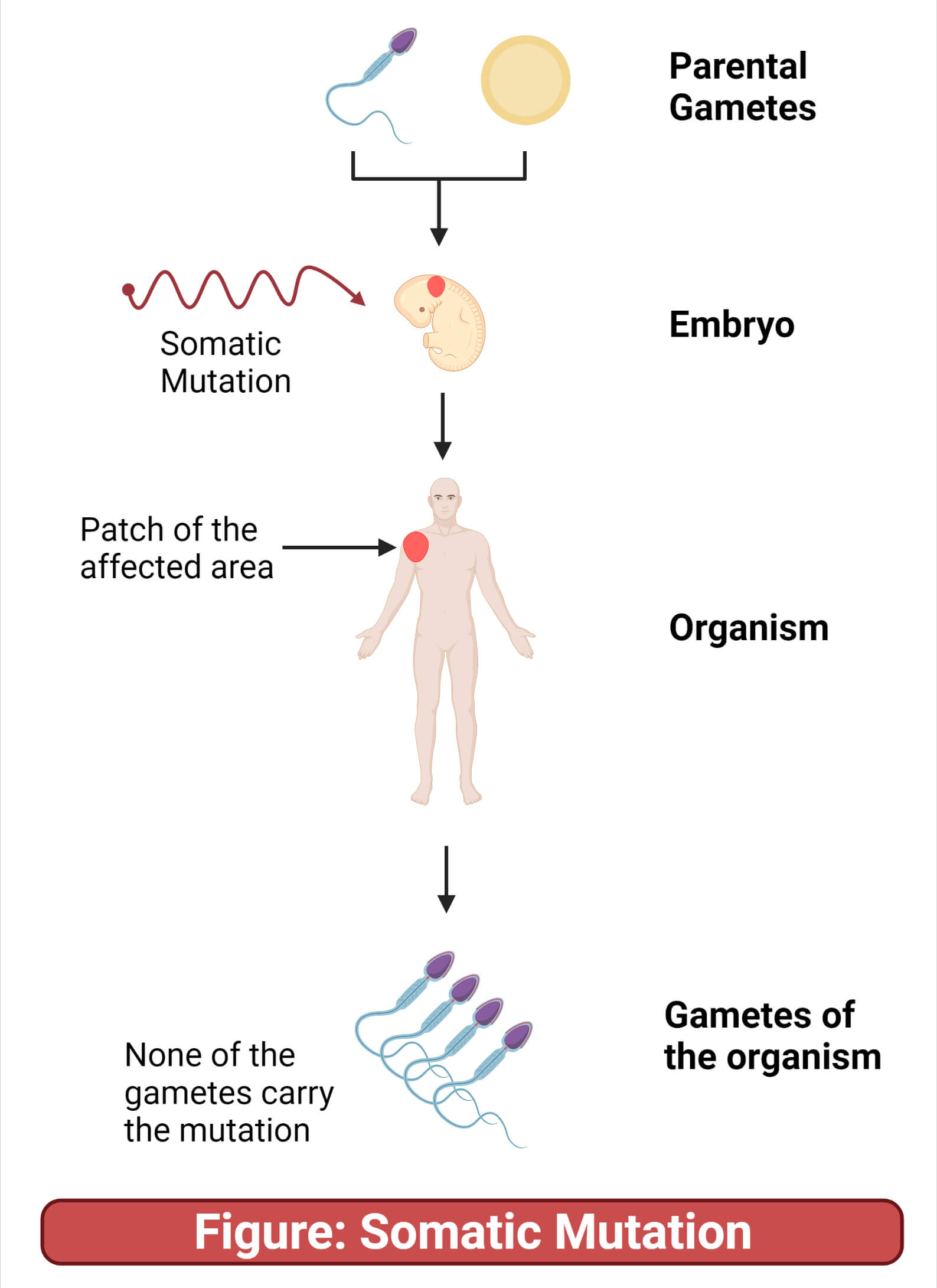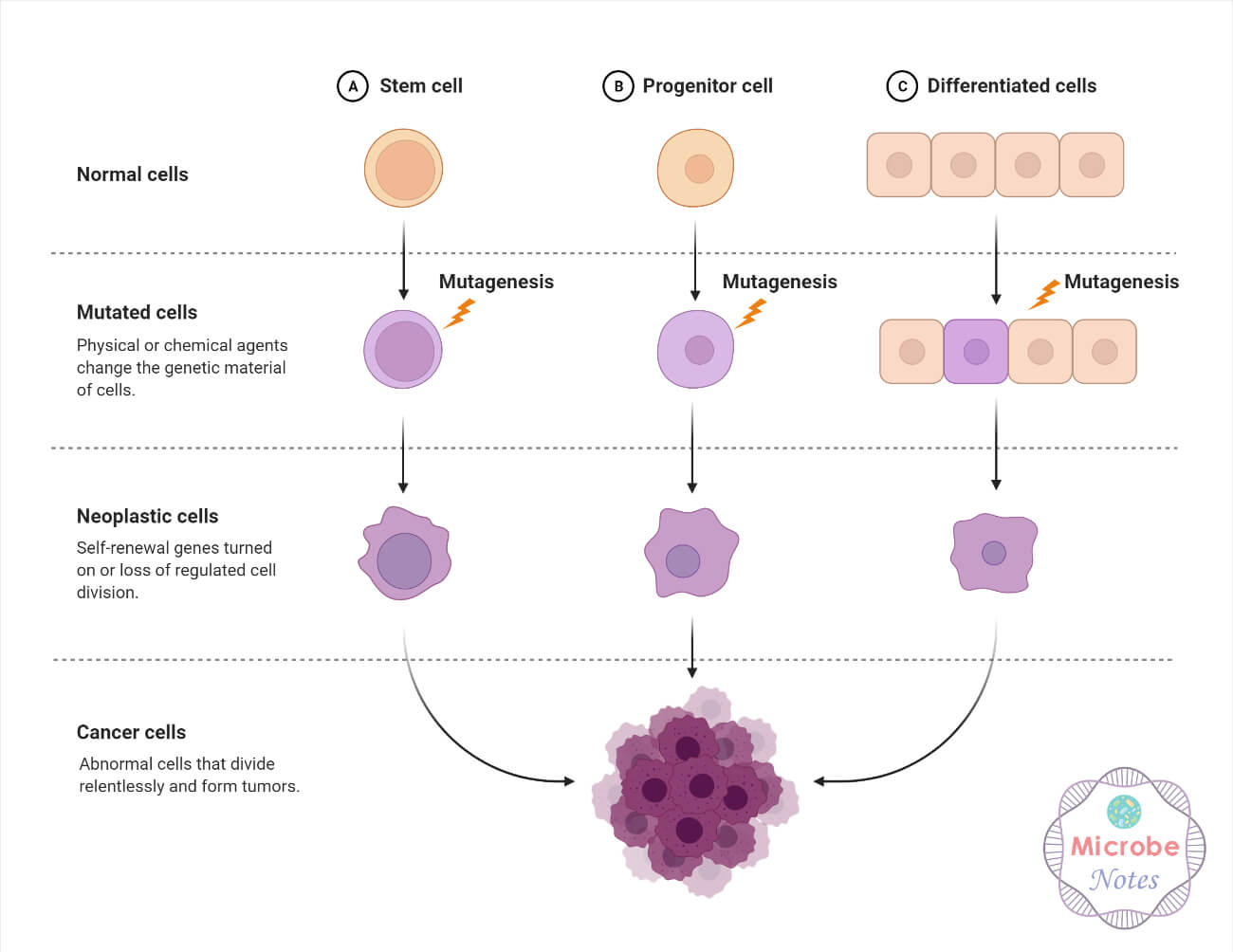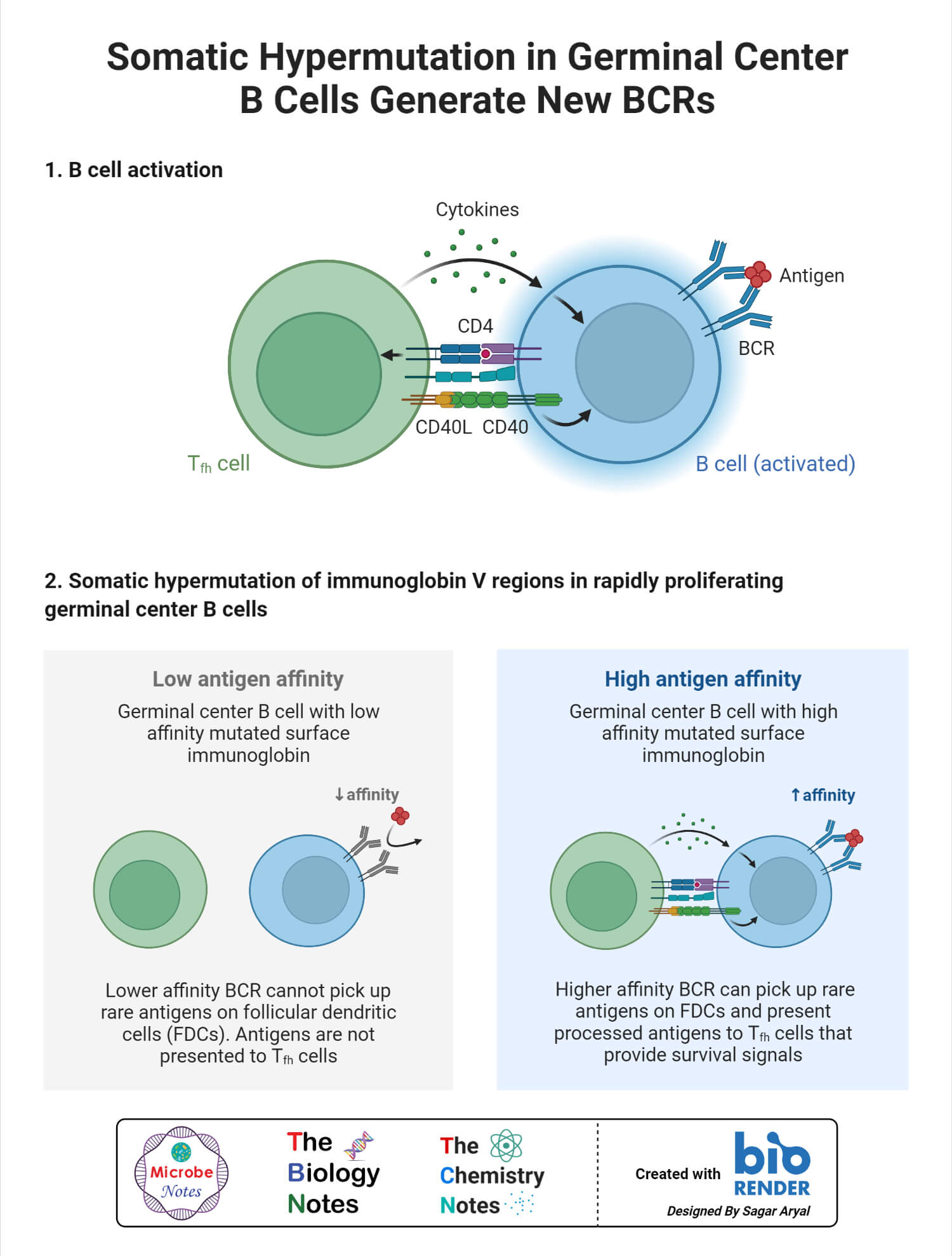Cells regularly go through mutational changes as a part of evolution. Mutation refers to the changes that occur in the DNA sequences during the replication process of cell division. It may be caused due to many factors, such as unforced errors during replication, exposure to environmental mutagens, or interaction with any pathogen.
There are two types of DNA mutation:
- Germline mutation occurs in the germ cells (eggs and sperm), which can be passed to the offspring.
- Somatic mutation occurs in the somatic cells and is not passed on to the next generation.
Read Also- Somatic Mutation vs. Germline Mutation- 13 Major Differences
Interesting Science Videos
What is Somatic Mutation?
Somatic Mutation can be defined as a mutation or genetic alteration occurring in the cells of somatic (bodily) tissue after fertilization.

Since the mutational events happen after the fertilization process, germ cells are not affected, and the mutation is generally not passed to the offspring. Somatic mutations are very frequent in an organism’s life cycle and aging events due to spontaneous errors during DNA replication and repair mechanisms and also due to the effects of environmental stressors such as cigarette smoke, radiation, and chemicals. Mutations that occur early during embryo development causes mosaicism (a person with two or more sets of genetically different cell lines in an organism) within a gene line, causing impaired organ development.
Somatic Mutation Causes and Cellular Stressors
There can be several factors and stressors that can cause somatic mutation.
- Endogenous Factors – this includes errors that may arise during cellular replication, DNA repair mechanism, and exposure to ROS (reactive oxygen species like hydroxyl radical, singlet oxygen, superoxides, peroxides, etc) formed during metabolic processes.
- Chemical Mutagens – many chemicals, such as ethyl methyl sulfate (EMS), dimethyl nitrosamine (DMS), vinyl chloride, and many more, damage or alter the DNA structure, mutating into pyrimidine dimers or changes in the nucleotide sequence of DNA repair mechanism.
- Physical Mutagens – these refer to high energy radiations like x-rays, UV-rays, alpha particles, etc., can serve as a potent carcinogen and make alterations in the DNA structure by breaking nucleotide bonds or changing nucleotide sequences.
- Cellular stressors include hypoxia, nutrient, genotoxic, and oxidative stresses that cause fluctuations in the cell or extracellular metabolic functions generating free radicals that are harmful to DNA.
Genotypic and Phenotypic Outcomes of Somatic Mutation
- When the mutation is induced in the DNA replication or mismatch repair system, leading to irreversible loss of original genome content.
- The somatic mutation build-up rapidly occurs, making the DNA repair mechanism ineffective, hence contributing to the loss of function of the respective gene.
- Somatic mutations genetically can manifest copy number variants, single nucleotide variants, or point mutations.
- These mutations result in genome mosaicism, causing detrimental effects on organ development, and increase with enhanced accumulation without interruption from DNA repair systems and replication checkpoints.
- Somatic mutation in early development can impair the respective cell line’s phenotypic presentation and original function.
- Mosaicism observed in the early neurocognitive development of prodigy cell lines can result in epilepsy and intellectual disability.
Mutational Frequency of Somatic Mutation
Somatic mutations accumulate over a period of time, thus contributing to the development of diseases such as cancer, sturge-weber syndrome, McCune-Albright syndrome, and many more. Somatic mutation frequency refers to the rate at which any mutation occurs in a particular cell type or tissue. This frequency can vary greatly on the basis of various factors, such as the age of an individual, exposure to environmental stressors like radiation or chemicals, and the type of tissue being mutated. Studies have revealed that the frequency of mutation is higher in somatic cells than in germline cells.
Diseases and Clinical Significance of Somatic Mutation
- The accumulation of somatic mutation in cells occurs over time as cells go through a round of cell division, which is very well studied in the process of aging and might lead to cancer.
- Somatic brain mosaicism is widely used for neurodegenerative mutations in post-mitotic and stem cell neurons, including age-related mutations like Alzheimer’s disease.
- In adults, post-mitotic neuron mutation only affects a single neuron, with its fate leading to cell death.
- The somatic mutation in a cell may accumulate over generations of its descendants, leading to a malignant transformation, making the normal cell into cancer cells.
Somatic mutation generates a growth advantage and prohibits cell death in cancerous tissues.

The recognizable pathologies of somatic mutation include:
MAS (McCune Albright Syndrome)
Caused due to somatic mutation in the GNAS1 gene that leads to the gain of function of G-protein receptors affecting the tissues of bone, skin, and endocrine system. The individual affected with this syndrome shows excessive cell proliferation in the affected tissue, early puberty, uneven pigmentation, and weak bones with recurring fractures.
PNH (Paroxysmal Nocturnal Hemoglobinuria)
Somatic mutation occurs to the PIGA gene, leading to the absence of GPI (glycosylphosphatidylinositol) anchored proteins CD59 and CD55 on the membrane of red blood cells. These anchored proteins are responsible for protecting the RBCs from the complement system. The individual affected by this syndrome frequently suffers blood clots, hemolysis, and impaired bone marrow function in response to cellular stress.
Sturge Weber Syndrome
Caused due to somatic mutation in the GNAQ gene leading to disruptions in vascular development. Individuals suffering from this condition may show symptoms of a ‘port-wine’ birthmark (pink or red birthmark), leptomeningeal angioma (a type of brain abnormality), and glaucoma (increased pressure in the eye). The patient frequently suffers seizure episodes.

Conclusion
Somatic mutations are changes in the DNA sequence occurring after the fertilization of gametes. They are not inherited by the next generations, as seen in germline mutations. Somatic mutation can occur in any type of body cells except germ cells due to factors like exposure to chemicals, radiation, errors during DNA replication or repair system, or simply due to aging. In the normal aging process, somatic mutations do not have many life-threatening effects, but at other times may cause diseases like cancer, Alzheimer’s condition, and more.
References
- Genetics, Somatic Mutation – https://www.ncbi.nlm.nih.gov/books/NBK557896/
- Somatic mutation – https://en.wikipedia.org/wiki/Somatic_mutation
- MUTATION – https://www.genome.gov/genetics-glossary/Mutation
- What is a mutation? – https://www.yourgenome.org/facts/what-is-a-mutation/
- Chromosome Mosaicism – https://www.yalemedicine.org/conditions/mosaicism
- Mutagens – https://www.vedantu.com/biology/mutagens
- Abramowicz, Agata, Piotr Widłak, and Monika Pietrowska. “Different types of cellular stress affect the proteome composition of small extracellular vesicles: a mini review.” Proteomes 7.2 (2019): 23.
- Paroxysmal Nocturnal Hemoglobinuria (PNH) – https://www.hopkinsmedicine.org/kimmel_cancer_center/cancers_we_treat/blood_bone_marrow_cancers/paroxysmal_nocturnal_hemoglobinuria_PNH.html
